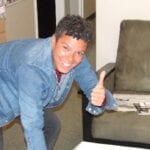A BC Supreme Court judge ruled Jun 9 that accused murderer Ken Jensen’s statement to police, as well as his letter of apology, are admissible as evidence in his ongoing trial.
In her ruling which took about 30 to 40 minutes to read out, Justice Mary Humphries dismissed Jensen’s application to exclude from evidence the letter, and the two-hour-plus statement which police videotaped after arresting Jensen Feb 3, 2007 outside a Starbucks in Burnaby.
In the video, Jensen tells RCMP Sgt Dave Attew that he choked Kong from behind in the living room of Kong’s condo, and later took Kong into the bathroom and put him in a bathtub. Jensen also tells Attew that he tied a hair dryer cord around Kong’s neck “to make sure he was dead.”
Jensen wanted to exclude both the letter and the statement on the grounds that police violated his Charter rights to “retain and instruct counsel without delay and to be informed of that right.”
But Humphries found the officers’ conduct and the advice Jensen received from legal aid counsel Greg Lanning to “clam up” completely fulfilled his rights under that section of the Charter.
She also found that Jensen was “fully informed” of his right to remain silent and exercised his free will when he decided to speak to police.
Humphries’ ruling came a day and half into the trial which began Jun 6, following a four-day voir dire into the disputed evidence.
The Crown has so far called five witnesses: two forensics officers; Kong’s sister Joan Peters; Michael Whitford, the brother of Jensen’s roommate, and Vancouver General Hospital (VGH) forensic pathologist Dr Charles Lee.
Under questioning by Crown counsel Rusty Antonuk, Lee testified that the cause of death was a result of “ligature strangulation” from the cord that was tied around Kong’s neck.
Lee said even considering that some decomposition and accompanying swelling had taken place by the time of the autopsy, the cord around Kong’s neck was “still fairly tight” enough to cause death.
Lee also testified that additional injuries to Kong’s upper neck area and just below the jawline are consistent with the application of what he called carotid neck hold ? a type of choke hold.
Lee also noted that the blood found on the living room sofa and carpet could be consistent with someone who had a nose bleed condition. In earlier testimony, Peters indicated that when her brother was stressed or upset, he suffered nose bleeds.
Kong also showed some signs of coronary disease but Lee said that condition was “not significant.”
Jensen’s lawyer Philip Riddell presented a different scenario of what could have happened to cause Kong’s death. Lee conceded that it was possible that Kong died in the living room as a result of an altercation that brought on cardiac arrest. Following Riddell’s logic it was also possible, Lee said, that the cord around Kong’s neck was applied after death.
But Lee maintained that while Kong could have been dead before the cord was tied around his neck, he was “definitely” dead after it was applied.
In other testimony, Michael Whitford said he was at his brother’s apartment Jan 20, 2007, the night Jensen met up with Kong. Whitford said Jensen came into the apartment carrying several items ? a laptop bag, laptop, a Columbia jacket, a discman, headphones and shoes ? under each arm.
Whitford described Jensen as “distressed” based on his body language and lack of conversation.
Whitford also testified that he suspected the items, which they shared out among themselves, were stolen.
The trial is expected to continue until Jun 13.

 Why you can trust Xtra
Why you can trust Xtra


